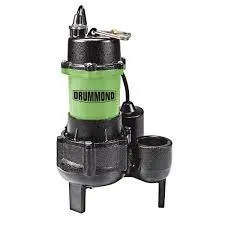Cebuano
- Afrikaans
- Albanian
- Amharic
- Arabic
- Armenian
- Azerbaijani
- Basque
- Belarusian
- Bengali
- Bosnian
- Bulgarian
- Catalan
- Cebuano
- Corsican
- Croatian
- Czech
- Danish
- Dutch
- English
- Esperanto
- Estonian
- Finnish
- French
- Frisian
- Galician
- Georgian
- German
- Greek
- Gujarati
- Haitian Creole
- hausa
- hawaiian
- Hebrew
- Hindi
- Miao
- Hungarian
- Icelandic
- igbo
- Indonesian
- irish
- Italian
- Japanese
- Javanese
- Kannada
- kazakh
- Khmer
- Rwandese
- Korean
- Kurdish
- Kyrgyz
- Lao
- Latin
- Latvian
- Lithuanian
- Luxembourgish
- Macedonian
- Malgashi
- Malay
- Malayalam
- Maltese
- Maori
- Marathi
- Mongolian
- Myanmar
- Nepali
- Norwegian
- Norwegian
- Occitan
- Pashto
- Persian
- Polish
- Portuguese
- Punjabi
- Romanian
- Russian
- Samoan
- Scottish Gaelic
- Serbian
- Sesotho
- Shona
- Sindhi
- Sinhala
- Slovak
- Slovenian
- Somali
- Spanish
- Sundanese
- Swahili
- Swedish
- Tagalog
- Tajik
- Tamil
- Tatar
- Telugu
- Thai
- Turkish
- Turkmen
- Ukrainian
- Urdu
- Uighur
- Uzbek
- Vietnamese
- Welsh
- Bantu
- Yiddish
- Yoruba
- Zulu
Telephone: +86 13120555503
Email: frank@cypump.com
Dis . 11, 2024 09:52 Back to list
Submersible Sewage Pump for Efficient Wastewater Management Solutions in Residential and Industrial Applications
Understanding Submersible Sewage Sump Pumps An Essential Component for Wastewater Management
In the realm of wastewater management, submersible sewage sump pumps play a critical role in ensuring the effective removal and handling of sewage and wastewater. These pumps are designed to operate fully submerged in the liquid they are pumping, making them a practical choice for various applications, particularly in residential, commercial, and industrial settings.
What is a Submersible Sewage Sump Pump?
A submersible sewage sump pump is a type of pump that is specifically designed to move sewage and wastewater away from areas prone to flooding or where waste must be relocated to a sewer or septic system. Unlike other pumps that may be located above ground, submersible pumps are situated in a sump pit below the surface, allowing them to efficiently manage sewage without the risk of overflow or spillage.
How Do They Work?
The operation of submersible sewage pumps can be described in a few simple steps
1. Activation The pump is triggered either by a float switch or a sensor that detects the water level in the sump pit. Once it reaches a certain level, the pump activates. 2. Pumping Action The motor within the pump activates, turning a series of impellers that generate centrifugal force. This force draws the sewage and wastewater into the pump from the pit.
3. Discharge The waste is pushed up through the discharge pipe and sent away from the area, either to a sewer line or a treatment facility, efficiently moving the liquid without the need for external intervention.
Advantages of Submersible Sewage Sump Pumps
There are several benefits to using submersible sewage sump pumps
submersible sewage sump pump

1. Efficiency These pumps are designed for optimal efficiency in wastewater handling, reducing energy consumption while effectively managing sewage.
2. Space-Saving Design Being submerged means these pumps take up minimal space. They do not require a large footprint, making them ideal for areas where space is limited.
3. Reduced Noise Pollution Since the pump operates underwater, any noise generated during its operation is minimized, making it suitable for residential areas.
4. Versatile Applications Submersible sewage pumps are adaptable for a variety of applications, including basement drainage, sewage pumping in homes, and industrial wastewater transfer.
5. Reduced Risk of Clogging Many submersible pumps are designed with larger impeller and pump housing diameters to handle solid waste, thus reducing the likelihood of clogs.
Maintenance Considerations
While submersible sewage sump pumps are relatively low-maintenance, periodic checks are recommended to ensure optimal functionality. Regular inspection of the pump and its components can help identify wear and tear, potential clogs, or mechanical issues that may arise over time. Additionally, checking the float switch’s operational status and cleaning the sump pit to remove debris can enhance the pump’s efficiency and lifespan.
Conclusion
Submersible sewage sump pumps are a vital tool in maintaining effective wastewater management systems. By understanding how they work, their advantages, and the importance of regular maintenance, homeowners, business owners, and facility managers can ensure that they are equipped to handle sewage and wastewater challenges effectively. Investing in a quality submersible sewage sump pump not only mitigates the risk of flooding and sewage spills but also contributes to a cleaner, healthier environment. As urbanization continues to rise, the importance of efficient wastewater management systems, and the role of submersible pumps within them, can hardly be overstated.
-
ISG Series Vertical Pipeline Pump - Chi Yuan Pumps Co., LTD.|Advanced Hydraulic Design&Energy-Efficient Solutions
NewsJul.30,2025
-
ISG Series Vertical Pipeline Pump - Chi Yuan Pumps Co., LTD.
NewsJul.30,2025
-
ISG Series Vertical Pipeline Pump - Chi Yuan Pumps Co., LTD.|energy-efficient fluid handling&industrial durability
NewsJul.30,2025
-
ISG Series Vertical Pipeline Pump - Chi Yuan Pumps | Advanced Engineering&Industrial Efficiency
NewsJul.30,2025
-
ISG Series Pipeline Pump - Chi Yuan Pumps | High Efficiency, Energy Saving
NewsJul.30,2025
-
ISG Series Vertical Pipeline Pump-Chi Yuan Pumps|High Efficiency&Reliable Performance
NewsJul.29,2025










